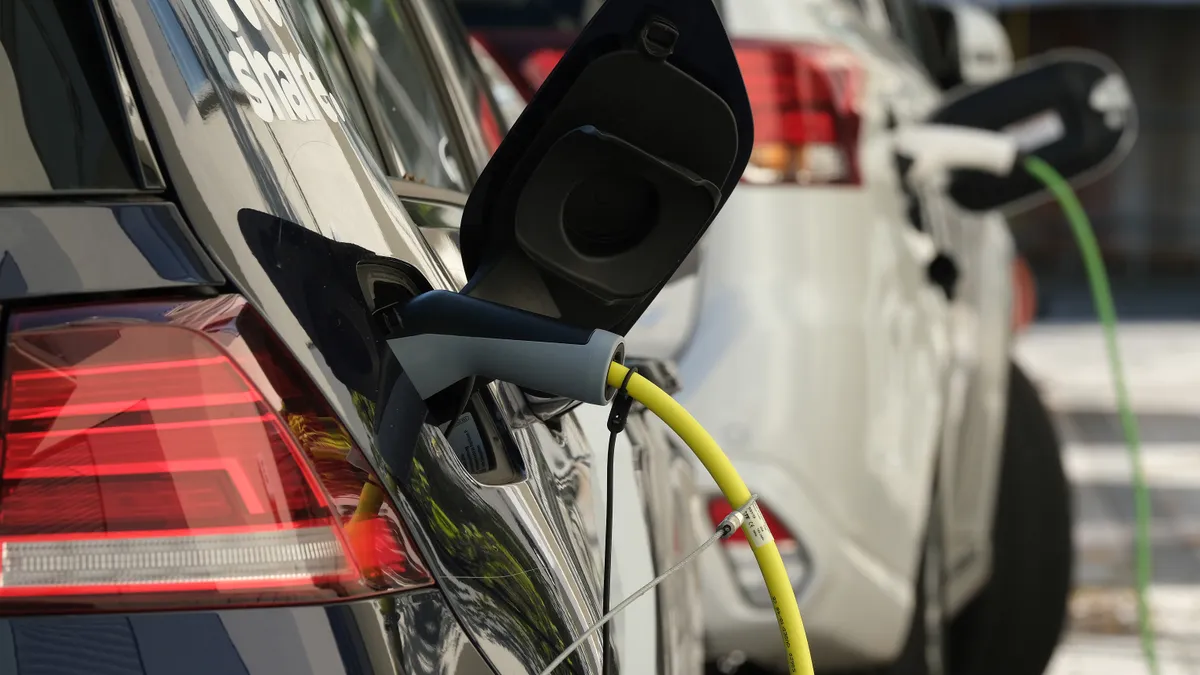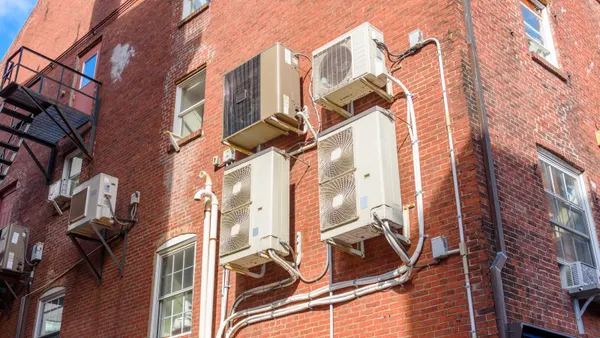Dive Brief:
- The Maine Public Utilities Commission (PUC) is asking the state's utilities to weigh in on how rate design could help the state reach its goals to deploy more energy storage, electric vehicles and heat pumps.
- The investigation, announced on Friday, builds on three bills passed during the 2021 legislative session, including one that sets a goal to deploy 400 MW of energy storage by 2030. Another bill required the state to explore alternative rate structures for electric vehicle (EV) charging stations, and a third changed the rate structure for military veterans' organizations.
- In comments on a previous PUC inquiry, clean energy groups said that alternative rate structures, including time-of-use rates, could encourage more residential and commercial storage deployment. "It's very forward-thinking to use rate design to promote these state policies, while also reducing consumer costs and ensuring that utilities continue to receive some return on investments," said Phelps Turner, a senior attorney with the Conservation Law Foundation in Maine.
Dive Insight:
Maine Gov. Janet Mills, D, signed legislation in 2019 setting a goal to decrease greenhouse gas emissions by 45% by 2030 and achieve carbon neutrality by 2045. A four-year plan released by the Maine Climate Council in December 2020 identified strategies to decarbonize transportation and buildings and encourage more clean energy sources. A subsequent report released in April from energy stakeholders included a recommendation to explore dynamic rate design that would encourage customers to shift their electricity use to off-peak hours.
The storage bill, which made Maine the ninth state to set an energy storage goal, directed the PUC to investigate the role of utility rate design and transmission upgrades in encouraging more storage, which can capture power generated from renewable sources and dispatch it when it is needed. A PUC notice of inquiry this summer gathered broad input, which largely found that time-of-use rates could play a role in distributed generation, load reduction and storage use.
The U.S. Energy Storage Association, Northeast Clean Energy Council and Maine Renewable Energy Association, for example, wrote in a comment that time-of-use rates would help residential customers "optimize in response to price signals" and take advantage of solar and storage products, including by rewarding customers for using storage during utility-called events. The groups also recommended that time-of-use rates be the default option for commercial and industrial customers, motivating them to charge during times when demand (and thus prices) are lowest and discharge at peak times.
"The more accurately that customer prices reflect real costs, the clearer the price signal to operate the energy storage system in the manner that is most beneficial to the electric grid," the groups wrote. The groups added that front-of-the-meter storage systems benefit most from flexible rate designs and from exemptions from demand charges.
Similarly, time-of-use rates could prove important for EV deployment by encouraging drivers to avoid charging at peak times and instead shift the charging load to off-peak and lower cost hours.
A 2017 rate design restructuring in Hawaii helped encourage more solar customers to adopt solar. Connecticut this summer directed electric distribution companies to implement revenue-neutral tariffs for storage projects rather than demand charges, and New York has recommended that standalone storage systems be exempt from demand charges. About half of investor-owned utilities in the U.S. have optional programs, according to a Brattle Group estimate.
Maine Central Power, which serves roughly 520,000 residential customers, has a voluntary time-of-use program. However, the company told Energy News Network that only about 5,000 customers have enrolled.
Turner, whose group also commented in favor of new rate design initiatives, said any program will have to be designed to ensure that low-income customers are not forced into a program that could raise their rates or force them to pay peak prices. Some programs, he said, are designed to default to lower rates for a certain period of time or offer rebates for some customers. Designed correctly, he said, dynamic rates could serve a variety of purposes in the state's decarbonization campaign.
"It's very important, relatively speaking, to be exploring this idea," Turner said. "It's one of the tools we can use to advance these important state policies. It's not the only one, but it's an important tool we can use."














